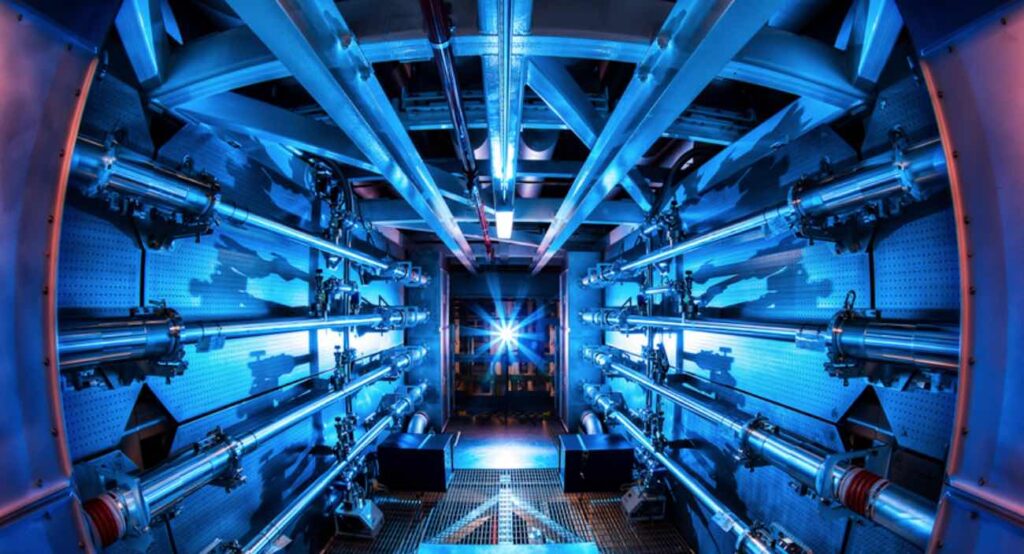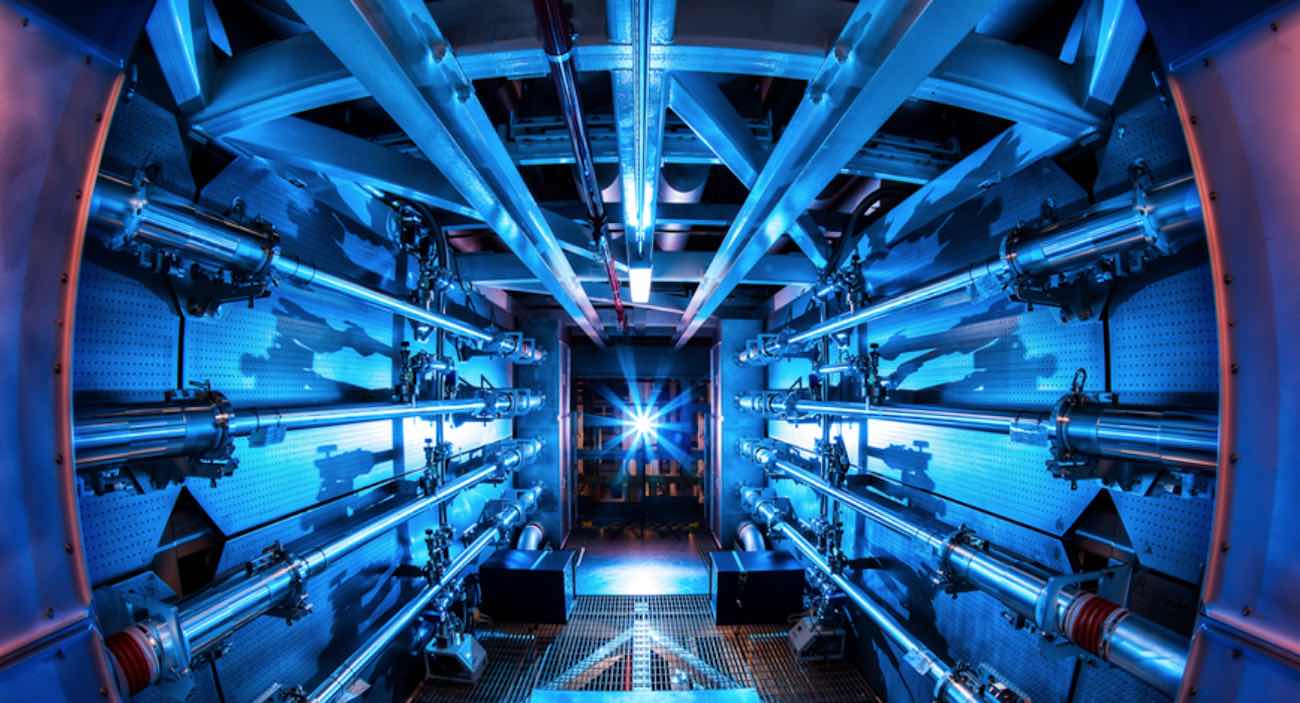
Researchers at a lab owned by the U.S. government have passed a crucial milestone on the way to their ultimate goal of achieving self-sustaining nuclear fusion.
On Aug. 8, 2021, an experiment at Lawrence Livermore National Laboratory (LLNL) made a significant step toward ignition, achieving a yield of more than 1.3 megajoules. Researchers said this advancement puts them at the threshold of fusion ignition, which is defined as a sustainable and never-ending powerful energy source.
The experiment was enabled by focusing laser light—the size of three football fields—onto a target which is the size of a BB that produces a hot-spot the diameter of a human hair, generating more than 10 quadrillion watts of fusion power for 100 trillionths of a second.
“These extraordinary results advance the science,” said Jill Hruby, DOE under secretary for Nuclear Security and administrator of the National Nuclear Security Administration.
RELATED: Australian Company Works to Make Energy From Nuclear Fusion – But Without the Fiery Ball of Plasma
Experiments in pursuit of fusion ignition are important for providing data in an experimental regime that is extremely difficult, and is an important gateway to enable access to high fusion yields in the future.
While a full scientific interpretation of these results will occur through the peer-reviewed journal/conference process, initial analysis shows an 8X improvement over experiments conducted in spring 2021 and a 25X increase over NIF’s 2018 record yield. It also marked the first time the output exceeded the energy absorbed by the fuel used to trigger it, according to Science Alert.
“This result is a testament to the innovation, ingenuity, commitment and grit of this team and the many researchers in this field over the decades who have steadfastly pursued this goal,” said LLNL Director Kim Budil. “For me it demonstrates one of the most important roles of the national labs – our relentless commitment to tackling the biggest and most important scientific grand challenges and finding solutions where others might be dissuaded by the obstacles.”
The experiment built on several advances gained from insights developed over the last several years by the LLNL’s National Ignition Facility team, including new diagnostics; target fabrication improvements in the hohlraum, capsule shell and fill tube; improved laser precision; and design changes to increase the energy coupled to the implosion and the compression of the implosion.
“Gaining experimental access to thermonuclear burn in the laboratory is the culmination of decades of scientific and technological work stretching across nearly 50 years,” said Los Alamos National Laboratory Director Thomas Mason. “This enables experiments that will check theory and simulation in the high energy density regime more rigorously than ever possible before and will enable fundamental achievements in applied science and engineering.”
Looking ahead, access to this new experimental model will inspire new avenues for research and provide the opportunity to create further benchmarks. Plans for repeat experiments are well underway, although it will take several months for them to be executed.
MORE: China’s ‘Artificial Sun’ Brings Nuclear Fusion One Step Closer, Breaking World Record
FOCUS Your Friends Like a Laser on This New Energy Milestone via Social Media..




















